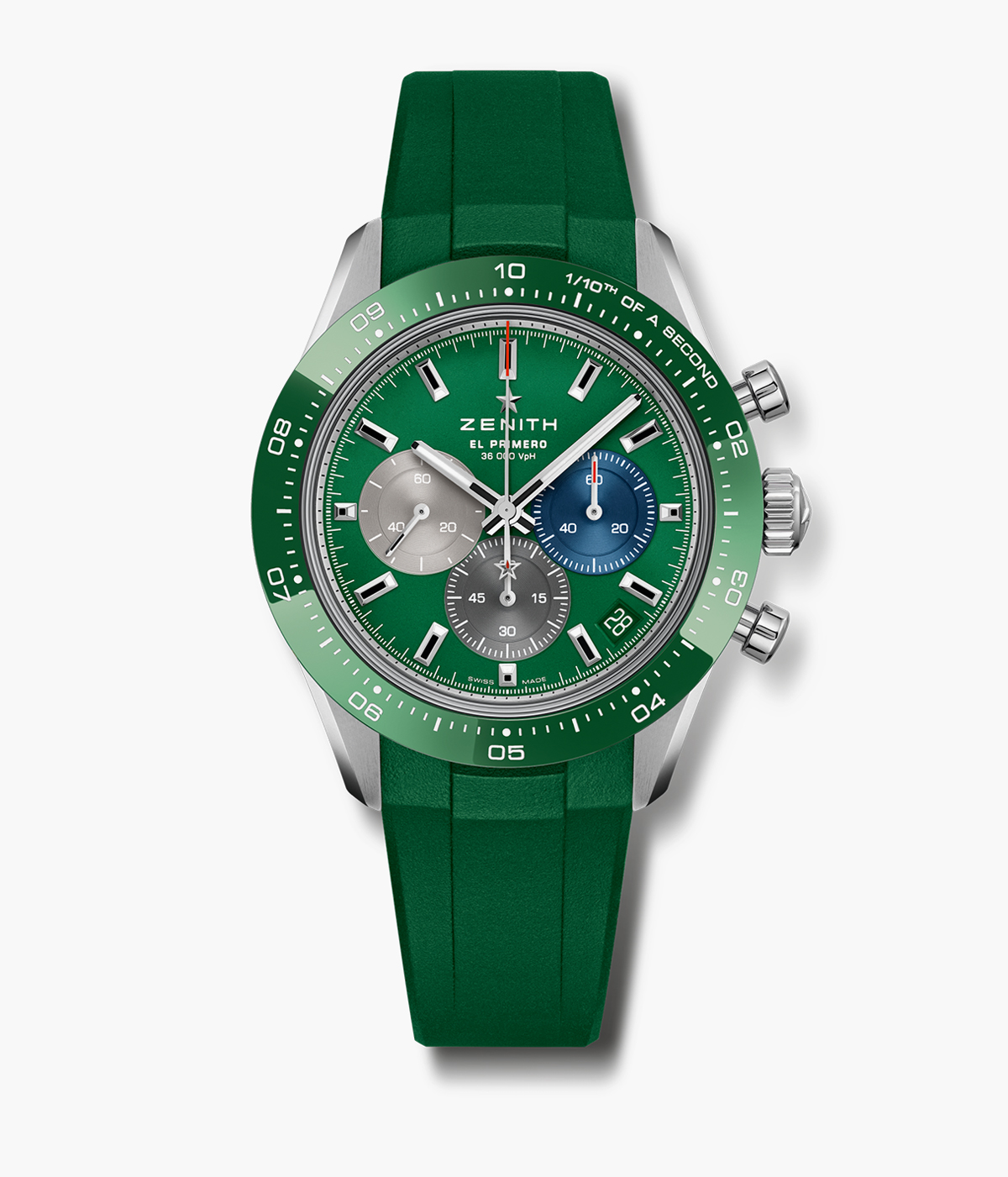New Zenith watches see heritage and modernity collide
These new Zenith watches see Julien Tornare pay tribute to the past in his last collection as CEO

Outgoing CEO Julien Tornare signed off his last new Zenith watches with a flourish, before moving up the road to take charge of TAG Heuer. The new watches demonstrate all the sharpness and savvy that made his promotion widely predicted within the industry.
As so often in the watch world, the secret of Tornare’s success at Zenith has been navigating the heritage without resorting to pastiche, a tougher job here than most, as so much of the brand’s usable heritage is rooted in a short period around the early 1970s, with designs that are too of their moment to update without radical surgery. It’s a brave CEO that sets design briefs of this kind.
Two new Zenith watches

Zenith Chronomaster Sport
Case in point is the latest Zenith Chronomaster Sport. It’s an entirely new design that takes the 1969 El Primero as a reference point, adding touches of a mid-1980s design called the ‘De Luca’, the Chronomaster Sport itself, and a generous touch of Daytona. There’s lots of history here, not least that Zenith was supplying movements for Rolex’s Daytona into the 1990s, arriving at a place that’s vintage-tinged, natural-born Zenith.
The new model has a green ceramic bezel matched to a lacquered dial with what’s becoming a recognisable Zenith code, alongside the three-tone subdial set and, thankfully, the date window, which has been colour-matched to the dial. (A gem-set version with a gold-toned meteorite dial was revealed at the recent LVMH Watch Week 2024 in Miami.)
More purely Zenith is the 38mm Original Chronomaster Triple Calendar which, at first glance, is a near replica of a 1970 watch that never made it into production. Zenith made 25 watches before deciding to delay production by few years, by which time the design changed radically to that of the boxy Espada, while the brand’s turbulent history meant that the template for the design was a watch bought at auction.

Zenith Chronomaster Original Triple Calendar
There’s no bezel, as the space is needed for the multiple subdials and calendar windows – not forgetting the moonphase tucked into the lower subdial. Necessarily, it’s a busy dial, though still attractive, but that does mean the dial’s most distinctive feature takes a second to resolve. The outer tracks are graduated for 1/10th of a second increments, a reminder of the fast rate the watch runs at – most regular watches still run at 4Hz compared to the 5Hz that delivers 10th of a second ‘ticks’.
There are three versions that follow a ‘panda’ layout of contrasting grey and white (the third, boutique only, version has green against white) matched to gold-plated hands and markers and, again, the date windows are colour-matched. An unobtrusive case and details that are that much sharper than the original nicely dials down the vintage flavour.
Wallpaper* Newsletter
Receive our daily digest of inspiration, escapism and design stories from around the world direct to your inbox.
Both watches are available on strap (rubber for the Chronomaster Sport and calfskin for the Triple Calendar) or bracelet.
James Gurney has written on watches for over 25 years, founding QP Magazine in 2003, the UK’s first home-grown watch title. In 2009, he initiated SalonQP, one of the first watch fairs to focus on the end-consumer, and is regarded as a leading horological voice contributing to news and magazine titles across the globe.
-
 All-In is the Paris-based label making full-force fashion for main character dressing
All-In is the Paris-based label making full-force fashion for main character dressingPart of our monthly Uprising series, Wallpaper* meets Benjamin Barron and Bror August Vestbø of All-In, the LVMH Prize-nominated label which bases its collections on a riotous cast of characters – real and imagined
By Orla Brennan
-
 Maserati joins forces with Giorgetti for a turbo-charged relationship
Maserati joins forces with Giorgetti for a turbo-charged relationshipAnnouncing their marriage during Milan Design Week, the brands unveiled a collection, a car and a long term commitment
By Hugo Macdonald
-
 Through an innovative new training program, Poltrona Frau aims to safeguard Italian craft
Through an innovative new training program, Poltrona Frau aims to safeguard Italian craftThe heritage furniture manufacturer is training a new generation of leather artisans
By Cristina Kiran Piotti